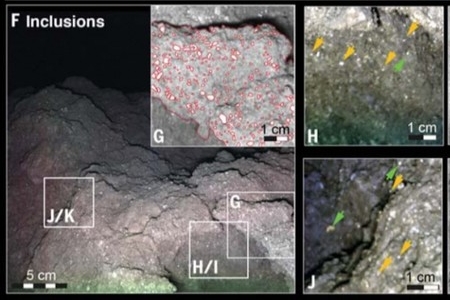After a year and a half orbiting around Ryugu, the Hayabusa-2 probe initiated its return to earth. The latter should arrive by the end of 2020 with some Ryugu asteroid dust samples aboard.
Nov. 19 - Ryugu dust samples are coming back to earth aboard the Hayabusa-2 probe


Category(-ies) : EREMS electronics in Space
A success for the Micromega hyperspectral microscope
As a reminder, it was in October 2018 that the MASCOT module landed on the 875 meters wide asteroid. After a tricky landing, MASCOT managed to collect data during 17 hours before running out of battery which enabled it to activate its Micromega instrument 7 times. EREMS provided the RF synthetizer embedded on this instrument which CNRS qualified “of impressive precision and repeatability”. Although the measurements are still being under analysis, the Ryugu environment has been proved to be difficult: very high temperatures, roughness of the soil and extremely low albedo.
Is Hayabusa-2 experiencing its last maneuvers?
Its mission mainly consisting in the study of the asteroid inner structure, the Hayabusa-2 probe conducted two approach maneuvers in order to collect dust samples from Ryugu’s surface. Today, these samples initiated their journey back to earth. The arrival of the capsule set in the Australian desert is expected by the end of 2020. Concerning Hayabusa-2, its disintegration is still some way off as its recycling is being under consideration for now.
Ryugu’s landscape
The August, 2019 edition of the magazine Science shows the first pictures taken by MASCOT of Ryugu’s surface. These revealed a dust-free soil that could be taken for a volcanic environment. Small millimetric inclusions appear on a landscape of granular blocks which reminiscence some meteorites like the Tagish Lake’s one found in 2000 on the Canadian frozen lake of the same name. These photos still have secrets waiting to be discovered and are the best way to illustrate the context in which the Hayabusa-2 samples and the MASCOT measurements were taken.
